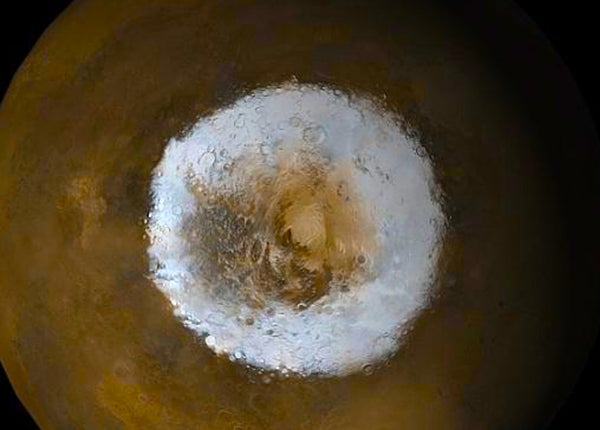This article was published in Scientific American’s former blog network and reflects the views of the author, not necessarily those of Scientific American
Back in July 2019 an intriguing paper appeared in the journal Nature Astronomy. The article reports on a study undertaken by Wordsworth, Kerber, and Cockell to investigate what might happen if you plastered parts of Mars with a thin, two to three centimeter layer of silica aerogel.
The background motivation for this work (which included both experiments here on Earth and mathematical modeling) was to ask whether there are alternative ways to imagine terraforming Mars - making it more suitable for life such as exists on Earth.
There are many challenges for terrestrial organisms on Mars: There is only a thin, carbon dioxide dominated atmosphere. Consequently fierce, molecule damaging ultra-violet radiation from the Sun reaches down to the martian surface. Mars is also very dry on its surface, although there is substantial water locked into subsurface deposits, most of which may be frozen. Mars has a caustic mix of chemistry in its soil-like regolith, including nasty stuff like ammonium perchlorate (sometimes used as solid rocket fuel here on Earth). And Mars gets cold, particularly at night and during the winter months in either hemisphere.
On supporting science journalism
If you're enjoying this article, consider supporting our award-winning journalism by subscribing. By purchasing a subscription you are helping to ensure the future of impactful stories about the discoveries and ideas shaping our world today.
In principle, as traditional ideas about terraforming suggest, if you could thicken up Mars's atmosphere you could help with a lot of these challenges. One option might be to try to unleash the huge reserves of frozen CO2 currently locked into the polar caps. But the scale of this operation puts it a long way off as a practical option. Plus, of course, there are valid questions about the whole notion of changing a pristine natural environment (which may still contain extant organisms, until proven otherwise) just because we want to.
As an alternative, what Wordsworth et al. suggest is a kind of localized 'farming' approach. Silica aerogel is extremely low density and porous, but it can also produce a solid-state greenhouse effect because it's fairly opaque to infrared radiation (and doesn't conduct heat well) but is partially transparent to visible and shorter wavelength light.
The bottom line is that if aerogel was placed over a region of ice-rich regolith on Mars (towards the poles for instance), within a decade the solid-state greenhouse effect could warm the land down to many meters depth. The silica would also block the most destructive UV light. The temperatures could climb into a range where, underground at least, liquid water could occur for much of the year. In this kind of environment, with light still reaching the surface, we could imagine photosynthetic microbes getting a foothold. Especially if the aerogel layer is lightly airtight, maintaining a slightly higher atmospheric pressure beneath it.
Of course, whether terrestrial (or indeed indigenous organisms, if they have ever existed on Mars) would survive and thrive is highly uncertain. Nutrient flow would be needed, and the silica aerogel would have to be manufactured on an industrial scale. The authors do point out that tiny marine diatoms on Earth are already good little silica engineers - building amorphous silica particles. Perhaps synthetic biology could be developed to build its own greenhouse covering on Mars.
Maybe the most interesting aspect of the study is how it shifts the idea of terraforming Mars to, in a sense, local 'farming' of Mars. The impact on the global state of the planet could be kept to a minimum, while the natural resources are sustainably utilized. Indeed, by keeping most of the planet in its natural, desolate state, the odds of catastrophic ecological change might be significantly reduced. And in the end it might be better to aerogel parts of the planet to grow food than to build colossal biosphere-like tents and all of their attendant infrastructure.
